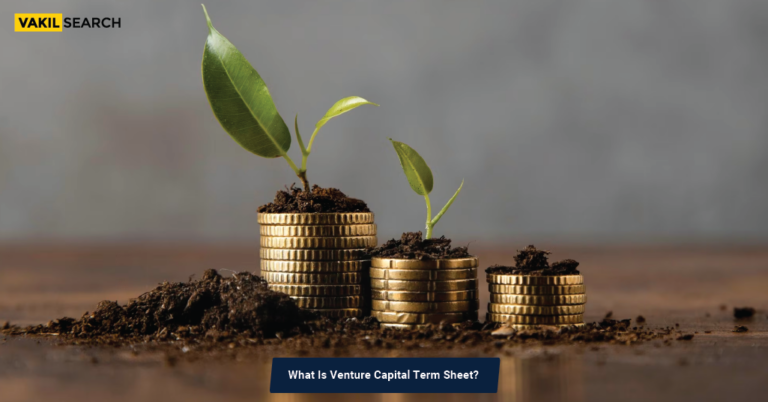This article will give detailed information about dividends on a term sheet and how to save your business from being over-reached by investors.
Like shareholders of a public firm, private equity investors get dividend payments as part of their returns. To save a firm from being over-drained of its capital, the company must know about the technical aspects and standard dividend rates in similar industries before declaring or accepting dividend on vc term sheet.
What is a VC Term Sheet?
The VC Term Sheet lays down specific agreements and conditions of venture investments between a venture firm and a company at its early stage. The investor generally prepares the short-term sheet.
VC Term Sheet Definition
A VC term sheet works as a non-binding legal agreement that forms the path of enduring legal documents like the Voting Agreement and Stock Purchase Agreement. Even though this sheet serves for a short time, it ensures to lay out the initial specifications of a VC investment like the raised dollar amount, valuation, class of shares, clauses of investor protection and investor rights. The term sheet will be transferred to the VC capitalisation table to numerically represent the investor’s preferred ownership plan in a specified format.
Timeline of VC Capital Raising
While the investment timeline can vary from a few weeks ranging to a few years, the venture capital timeline for a company at an early stage has to follow six steps:
- Start-up Formation: Hiring core team, idea formulation, filling intellectual property, MVP
- Investor Pitch: Start-up ‘roadshow’ marketing, feedback on a particular idea, the start of diligence
- Investor Decision: Continuing due diligence, pitching of final investor, the decision of venture partner
- Term Sheet Negotiation: Valuation, deal terms, cap table modelling
- Documentation: Completing due diligence, government filings, and legal documentation.
- Sign, Fund and Close: Fund, build and budget.
Investor and Entrepreneur Agreement
The investor and entrepreneur need to agree on where both objectives can play out in the term sheet.
Investor Objectives
- Maximise the return of financial investment while reducing risk
- Govern the strategic and financial decisions of the portfolio company
- Provide necessary capital if the investment progresses well
- Obtain liquidity via IPO or eventual sale
- Return at a high rate on the fund and raise additional funds successfully.
Entrepreneur Objectives
- Proving the validity of a business idea
- Raise funds for operating the business with additional flexibility
- Maintain majority control of the business entity while sharing risk with monetary backers
- Establish successful operations under the company
- Lead to the next step or repeat the process with any new venture.
Potential Sources of Conflict
Here are some potential conflict sources that need to be negotiated in the term sheet.
- Valuation: What is the business worth today?
- Definition of Success: How will this company’s success be in the future?
- Control Rights: Who owns the control of its future?
- Time of Achieving Outcome: How long can monetise the VC investment take?
- Share of Returns: How will split the proceeds between the management and the investor(s)?
Key Sections of the VC Term Sheet
The main sections of a typical VC Term Sheet are-
- Offering terms
- Charter: This includes Dividend Policy, Liquidation Preference, Anti-Dilution Protection and Pay Play Provision
- Stock Purchase Agreement
- Investor Rights: It includes Registration Rights, Lock-up Provision, Information Rights, Right to Participate and Employee Option Pool
- Co-Sale Agreement or the Right of the First Refusal
- Voting Agreement: It is comprised of the Composition of Directors’ Board and Rights to Drag Along
- Other terms include no confidentiality clause, a copy of Pro-forma and the expiration date of the term sheet.
What is the Dividend?
A dividend refers to a distribution of profits made by the company to its shareholders. The dividends can be in stock or cash. Since early-stage businesses do not make profits, cash dividends can be uncommon in those companies. Even if there are cash dividends, they need to be reinvested in the company for further growth. Stock dividends can be problematic for their dilutive nature.
Dividends can be of two types: cumulative and non-cumulative. With the help of any non-cumulative dividend, if the Directors’ Board doesn’t announce a dividend in a fiscal year, it ensures that the privilege to get the dividend that year will extinguish. With the help of cumulative dividends, the dividend amount is calculated for all fiscal years. The dividend can be carried forward until the amount is paid or the right for the same is terminated.
Cumulative Dividend as a Protective Device
Cumulative dividends can be uncommon, holding only 10% or less of financings. Investors push for any form of a cumulative dividend, which can act as a protective device providing a minimum rate of return annually on their investment. Therefore, it is tied to the preference for liquidation. If the business surrenders to the issue, it has to make clear that the cumulative dividends are to be payable only in case of a liquidation event or sale of the business and forfeit in an IPO event or in case the preferred stock is converted into common stock without protection.
Most Favourable Provisions to the Company
A dividend provision can become protective of the business entity if it mentions something like- “ Dividends will be paid on the Preferred stock on an as-converted basis only if, when and as paid on the Common Stock.” This can be favourable to the company as investors’ right to any dividend is only to participate with the known stockholders if and when declared by the Company Board. Investors, however, will get a limited preference to pay first in case a dividend is declared. The provision will be outlined as “ Annual on-cumulative dividends on the Preferred Stock will be payable only if and when declared by the board, and prior and in preference to any declaration or payment of any other dividends.”
Conclusion
We need to understand the respective positions of VCs and entrepreneurs as negotiators. Dividends can be handed craftily with a proper negotiation of the dividend on VC term sheet. However, founders must be alert to actual cumulative and stock dividends, diluting them.
We need to understand the respective positions of VCs and entrepreneurs as negotiators. Dividends can be handed craftily with a proper negotiation of the VC term sheet.
Follow Vakilsearch to clear all your confusion and queries related to any legal issues and find a solution for them.
Read more:










